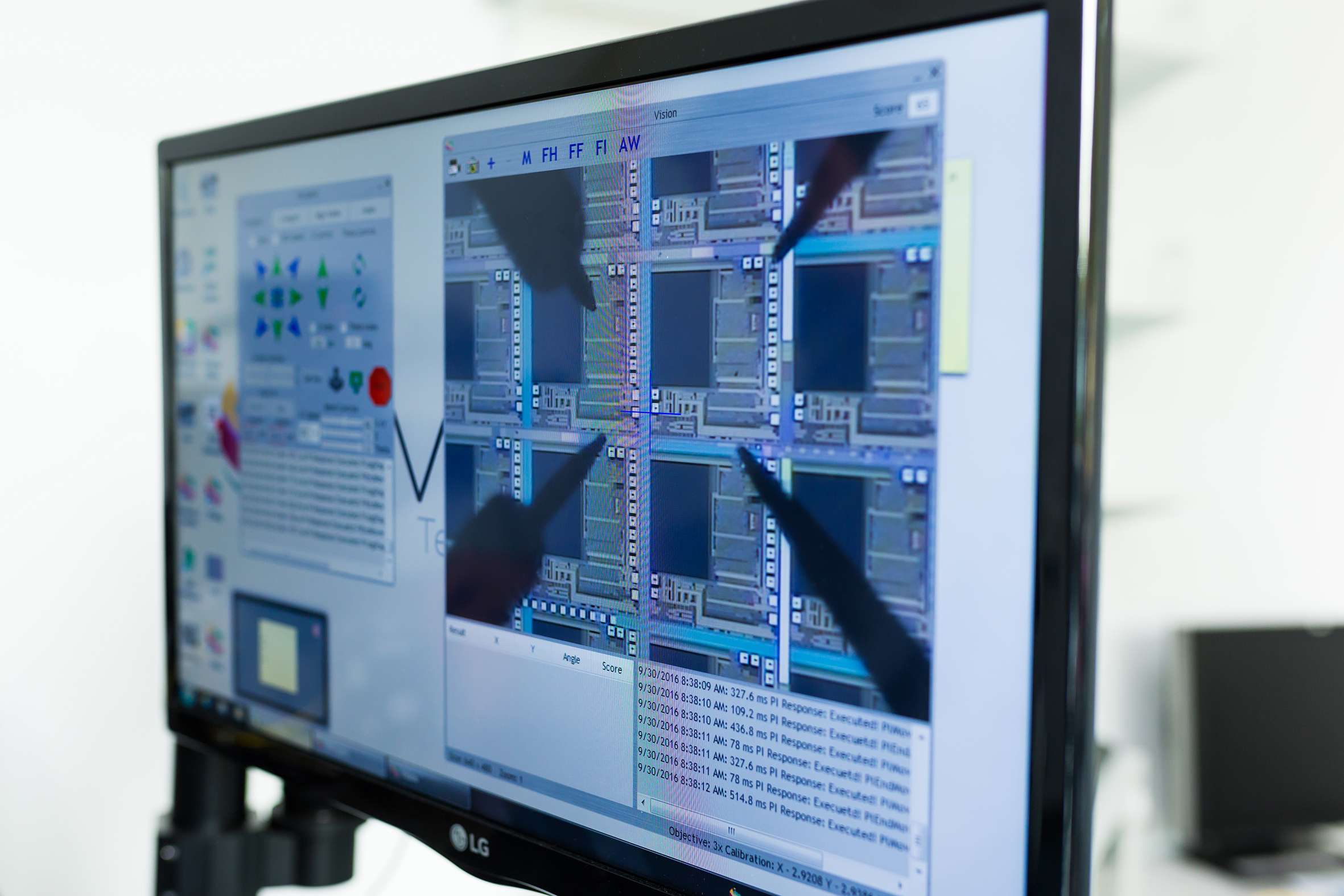Newsletter 02/2017
In the European project ADMONT, partners from industry and research in the Dresden area are developing unique production lines for "More-than-Moore" electronics. The work of the researchers at Fraunhofer IIS/EAS helps ensure that the resulting microchips satisfy the required level of quality. At the project mid-point, they have already developed the first models for simulation, which realistically depict the future behavior of these components even during the development process.

In order to make microelectronics even more intelligent, manufacturers rely on integrating an increasing number of functions into chips of decreasing size. These »More-than-Moore« technologies include, for example, diverse micromechanical and optical sensors as well as actuators, ultra-high voltage components and 3D-integrated elements. When it comes to such technologies, however, no single site exists yet in Europe where customers can find everything necessary for the production of small series. This is where project ADMONT - which also includes the Design Automation Division EAS of Fraunhofer IIS as a member - comes in. The objective is to create pilot lines for these technologies in and around Dresden, which will be available to companies from various industries for their product development work. According to the modular design principle, they should be able to use either individual modules or an entire manufacturing sequence as of 2019.
The pilot line should cover the widest possible range of applications while also guaranteeing high reliability for the resulting electronic products. With its competence in the design of integrated circuits (ICs), Fraunhofer IIS/EAS is contributing to overcoming these challenges. The researchers are investigating and characterizing various effects that result from process fluctuations, wear and interactions between the electronic components. The focus lies on developing models to be integrated into simulations of transistor aging. This will make it possible to virtually test the future behavior of circuits and their components.
During the first half of the ADMONT project, the researchers have already developed simulation models for a technology program that has been improved upon over the course of the project. »It has never before been possible to carry out aging simulations for this, although this is especially important for use in low-energy components for automotive and industrial electronics or medical technology, for example,« explains Dr. André Lange, project lead at Fraunhofer IIS/EAS. He and his team are also improving algorithms that allow fluctuations in the electrical behavior of components to be depicted virtually.
The work should assist IC designers in designing circuits that function robustly and reliably for long periods. For especially realistic results, the researchers will therefore be spending the remainder of the project optimizing the already developed models with regard to their precision and various dependencies. In addition, they will develop additional models for various specifications and for the typical design environments that semiconductor designers work with. »Already today, we also offer companies the ability to carry out function tests and characterizations on wafers,« continues Lang. »This is our contribution to ensuring that even customers with particularly individual requirements will be able to make optimal use of the pilot lines in two years.«
ADMONT runs until summer of 2019 under the leadership of the chip manufacturer X-FAB Dresden GmbH & Co. KG. 19 research and application partners from six European countries are involved. The project is focused on the Dresden region. It is an innovation action of the joint technology initiative ECSEL and is financially supported by the European Commission and the participating Member States. The national funding for the project partners in Saxony is divided equally between the Federal Ministry for Education and Research and the Free State of Saxony.
 Fraunhofer Institute for Integrated Circuits IIS, Division Engineering of Adaptive Systems EAS
Fraunhofer Institute for Integrated Circuits IIS, Division Engineering of Adaptive Systems EAS